It’s been a year since I first laid eyes on the Ilford Advocate camera, and I’ve been eager to share my experience with it. The journey began in England, where my wife and I stumbled upon a charming camera and photo reseller, Juliano of Cameras London, on Portabello Road. Little did I know that this encounter would lead to acquiring a unique piece of photographic history.
My wife and I went to Portabello Rd in London on Friday to look at the antiques there and for me to look for photo items, which there were few of, but I was told that Juliano would be there the next day and he was the person to see. While there wasn’t much time to return the next day, I took the bus early and arrived while Juliano set up. My intention wasn’t to purchase an Advocate, but as we talked and I mentioned I had one before, he said he had a couple and was willing to part with one. He didn’t have it with him, so we arranged to have it shipped to my home in the US.
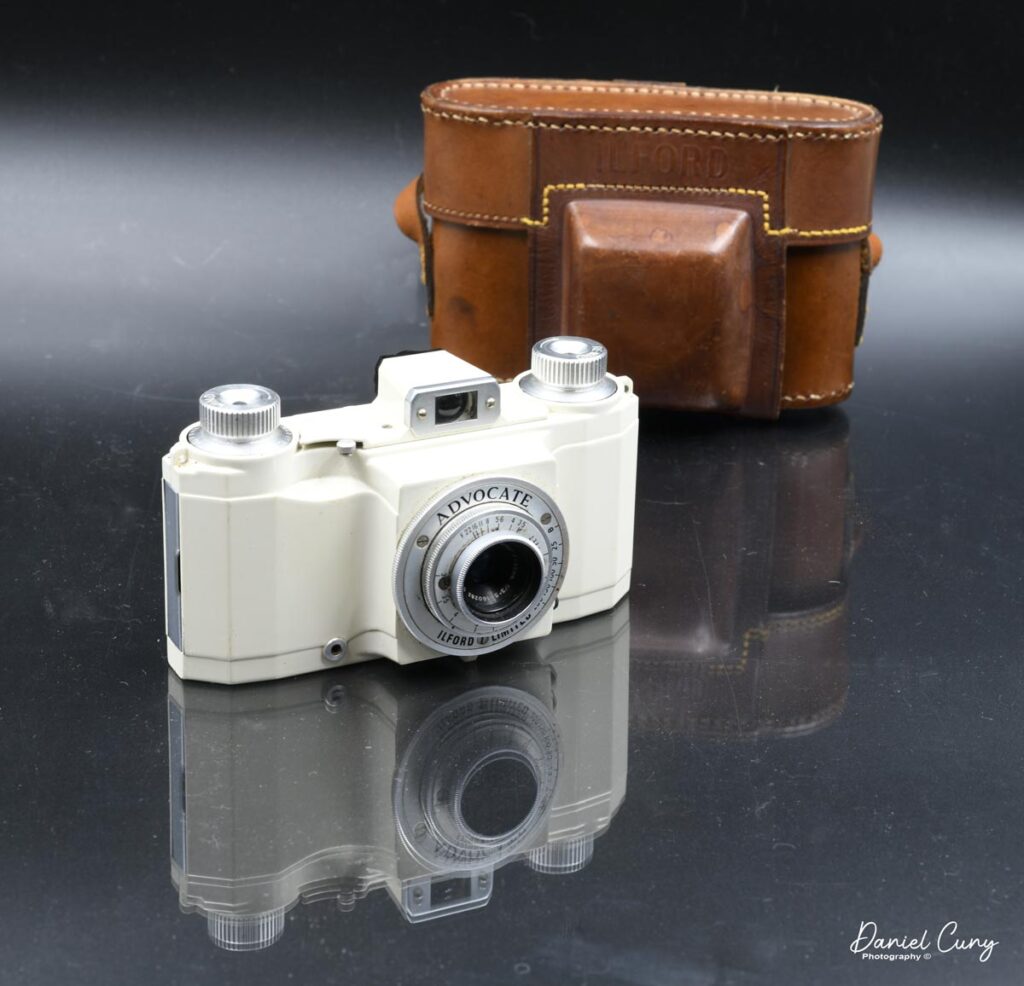
When the Ilford Advocate arrived and a couple of other items I was buying from him, it was in excellent working condition. I was delighted, as the camera isn’t typical but more of an oddity. While I collect “colored” cameras, the white color of this camera makes it stand out in the crowd of mainly back cameras. I was happy to have the Ilford Advocate back in the collection, in excellent working condition, and the full-fitted leather case, too.
The Company
Ilford is known less for its cameras than for its film, photo paper, and now inkjet printing paper, at least within the photo community. The company has had a long history with many name changes. Still, it’s always been a significant name in the photo industry before companies like Leica, Rollei, or even Kodak.
The original company name was Britannia Works, which was started by Alfred Harman in 1879 by making Gelatine Dry Plates in his basement on Cranbrook Rd, in Ilford, Essex. Harman initially started printing services in 1863, and in 1878, he patented “producing enlarged photographs with artistic finish.” By 1880, Harman moved to Roden St. and started trading as Brittania Works Company. By 1883, the company was expanding with the popularity of photography, and Harman opened a new factory to produce plates.
By 1890, Harman produced a popular book, “The Manual of Photography,” and the book, “The Ilford Manual of Photography,” was created under that name until 1958, when it was in its 5th edition. In 1891, Kodak started producing plates in Harlow, Middlesex, as a competitor to Britannia Works. In 1897 and again in 1903, Eastman Kodak attempted to purchase Britannia Works Company, but both times were unsuccessful. In 1898, Alfred Harman retired at age 50 but did consulting work for many years. In 1900, the company changed its name to Ilford, Ltd. The town council was happy and objected, but with persistence, the name was changed.
In the 1960s, the company was owned by Ciba, and they merged with the French company Lumiere and Swiss company Tellko and became the Ilford Group. In 1989, the Ilford Group was purchased by the US-based International Paper Company, and together, they merged to become Ilford Anitec. From 1990 to now, the company has gone through a few other acquisitions and receiverships, and the current time is when the parent company is Harman Technology. Through it all, they still produce tremendous film, photo paper, film, and paper chemistry.
To my knowledge, only one camera manufacturer was under the Ilford umbrella in this long-winded explanation of the Ilford company. That is Kennedy Instruments Ltd., which designed and built the Advocate starting in 1947 and updated it in 1952. The rarely-seen Monobar cameras were produced from 1958 to 1967. Companies like Dacora, AGI, or Kershaw-Soho created all the other cameras with the Ilford name.
My Camera
The first thing I noticed about the Ilford Advocate, other than the apparent white color, is the weight of the camera. Or the camera’s lack of weight as it’s a very light camera. The camera is made from a die-cast aluminum body with an enameled white finish. The camera body is smooth to the touch and lacks any leather or leatherette, which is uncommon for cameras. My camera measures 5 3/8″ wide by 3″ tall by 2.5″ deep and weighs 1lb 1.5oz without the fitted leather case.
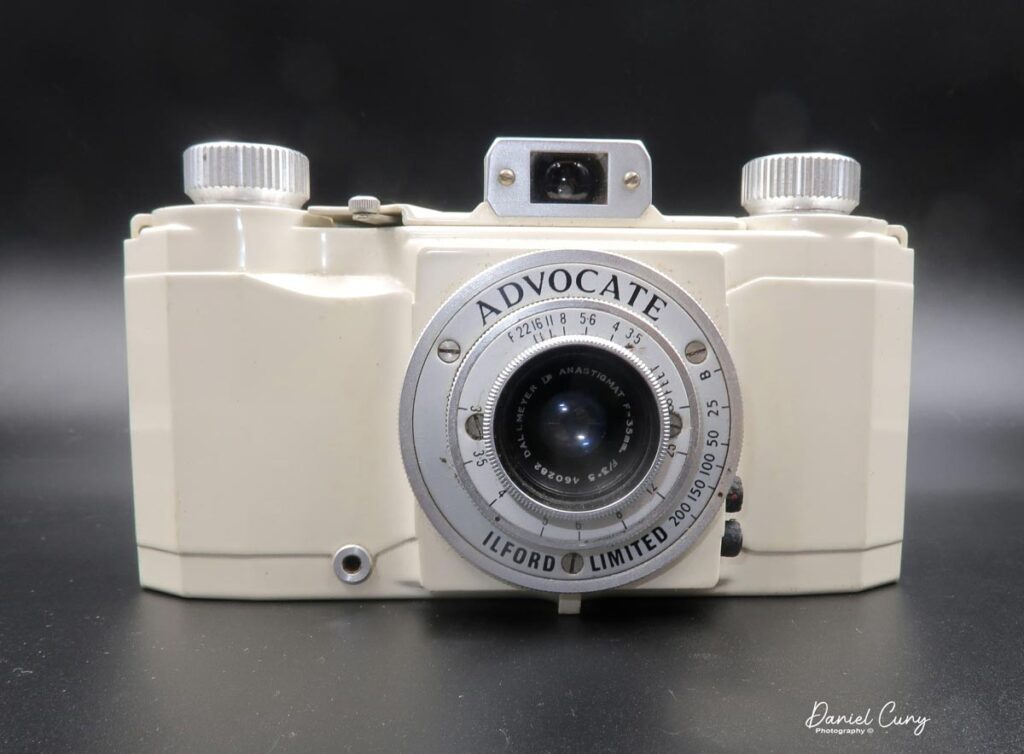
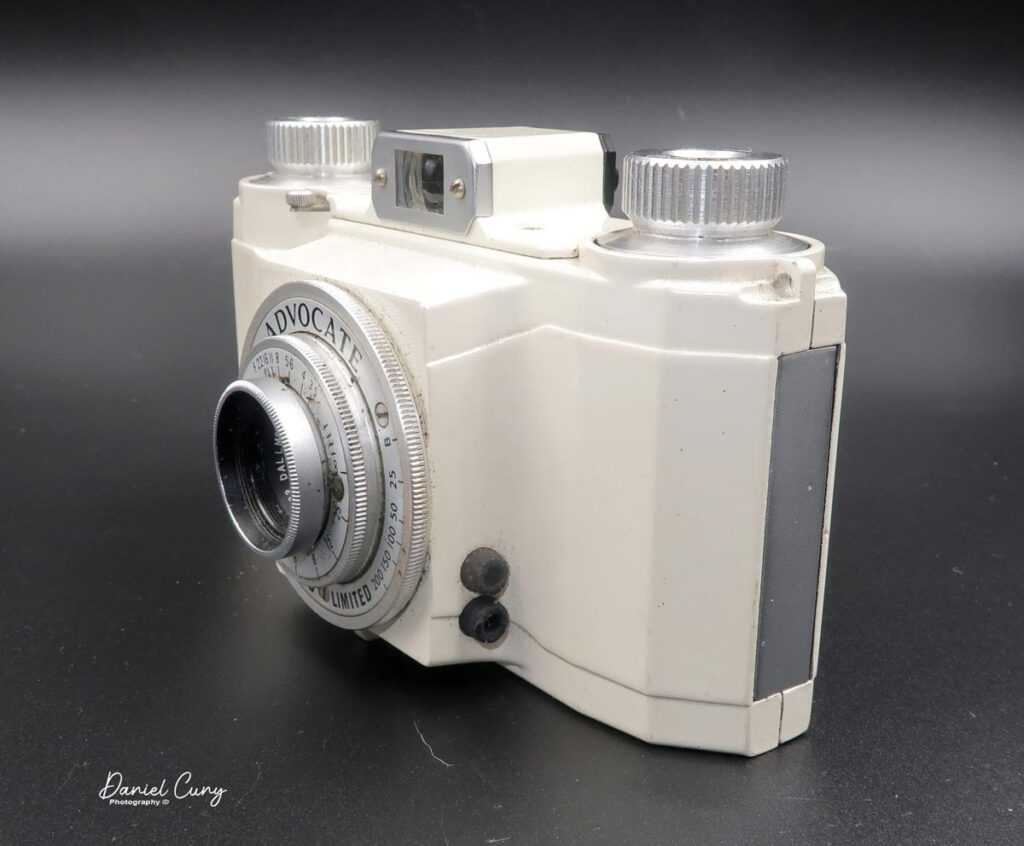
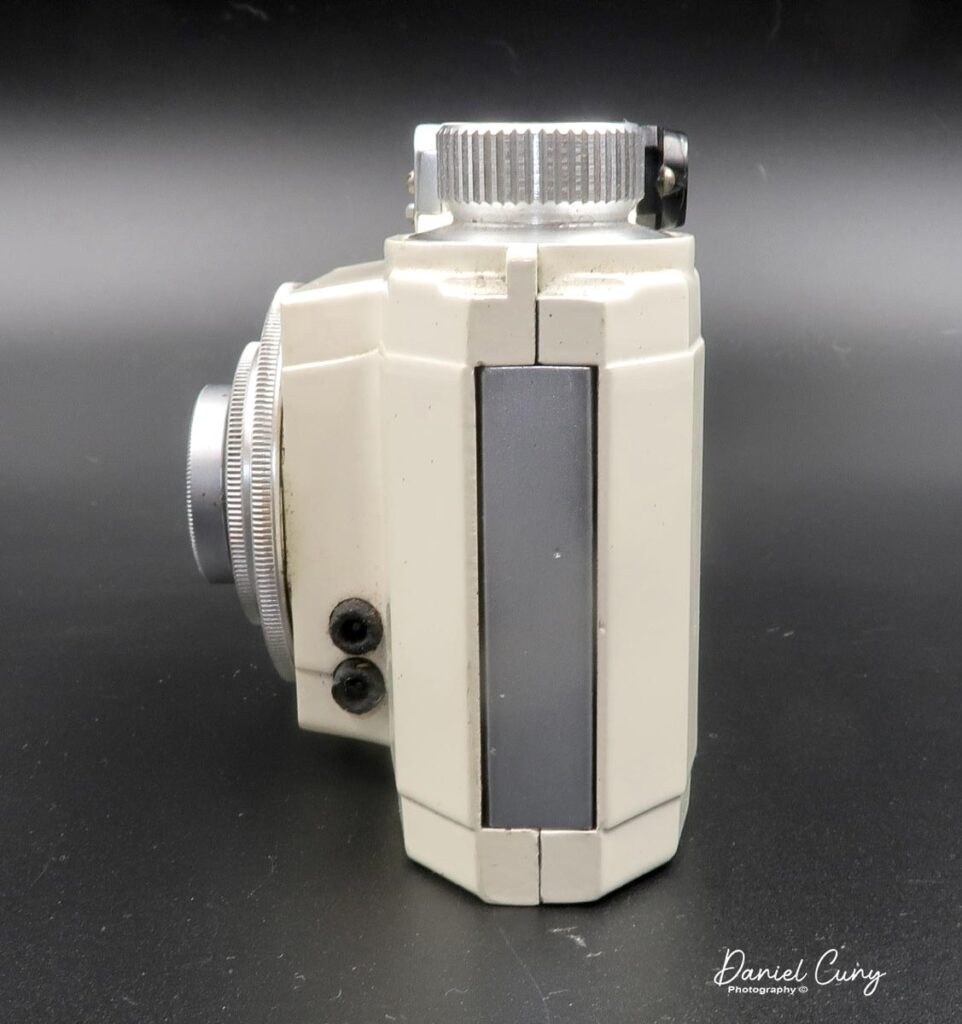
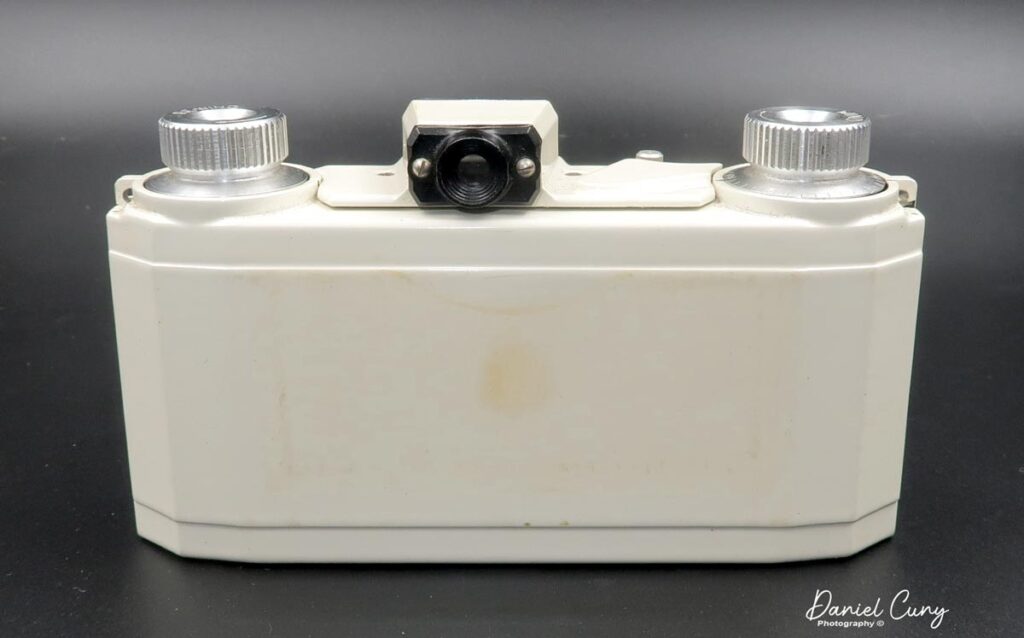
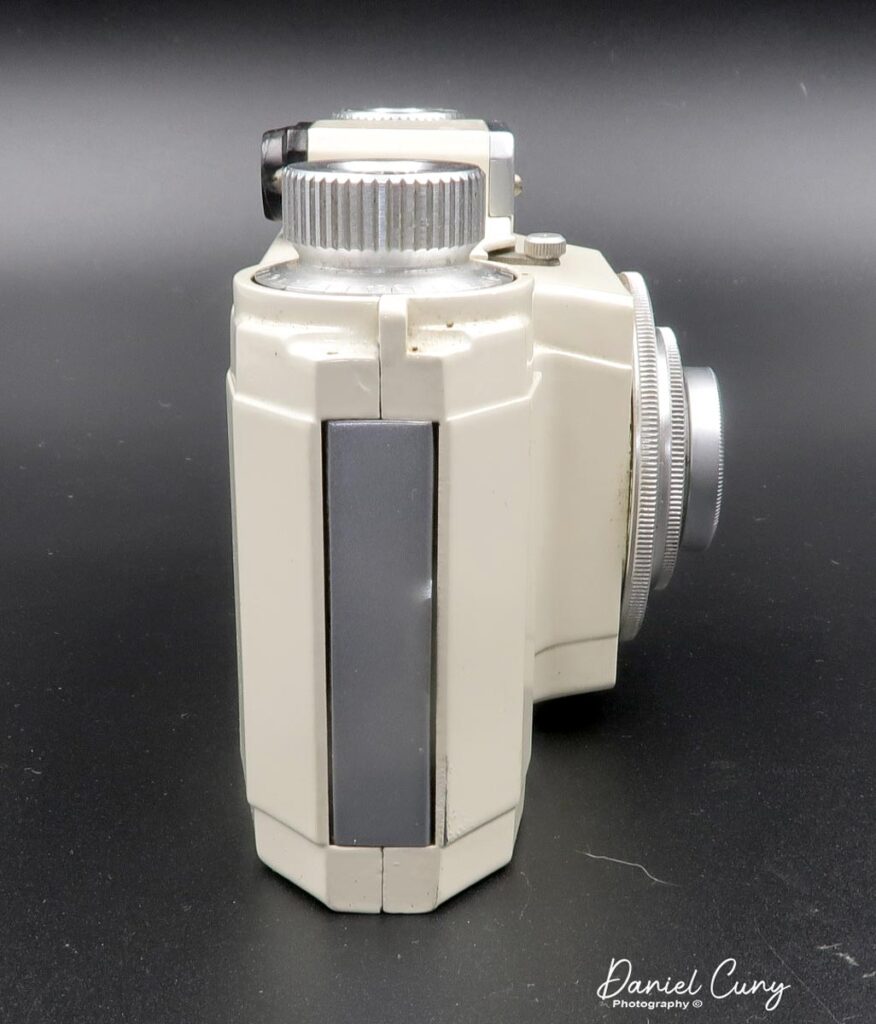
The Ilford Advocate is straightforward and doesn’t have a lot of extra knobs or buttons to do different things on a camera which is what makes this one so unique. To open the back to load the film, you only need to pull open the aluminum bar on the right side of the camera, which releases the lock holding the back closed. Once you open the, I noted chrome gear by the advancing cogs and onto the film advance spool. My first thought was, That’s unusual. Then when I tried to put in the film, the rewind knob didn’t pull up like the majority of 35mm cameras to load the film. As I poked around, I noticed that the rewind knob is actually hinged, and it pulls away from the body, which allows the photographer to put the film into the camera body.
It’s always my inclination to put the film cassette into the camera first, then bring the leader to the take-up spool to load. But looking at the instruction manual, they suggest putting the film leader into the take-up spool first, then putting the cassette after. Having the rewind knob on a hinge makes perfect sense to do it that way. Once I put in the film, I always take the slack of the film with the rewind knob, so when I go to advance the film, I know the film is transporting when I see the rewind knob turn ad I advance to the next frame.
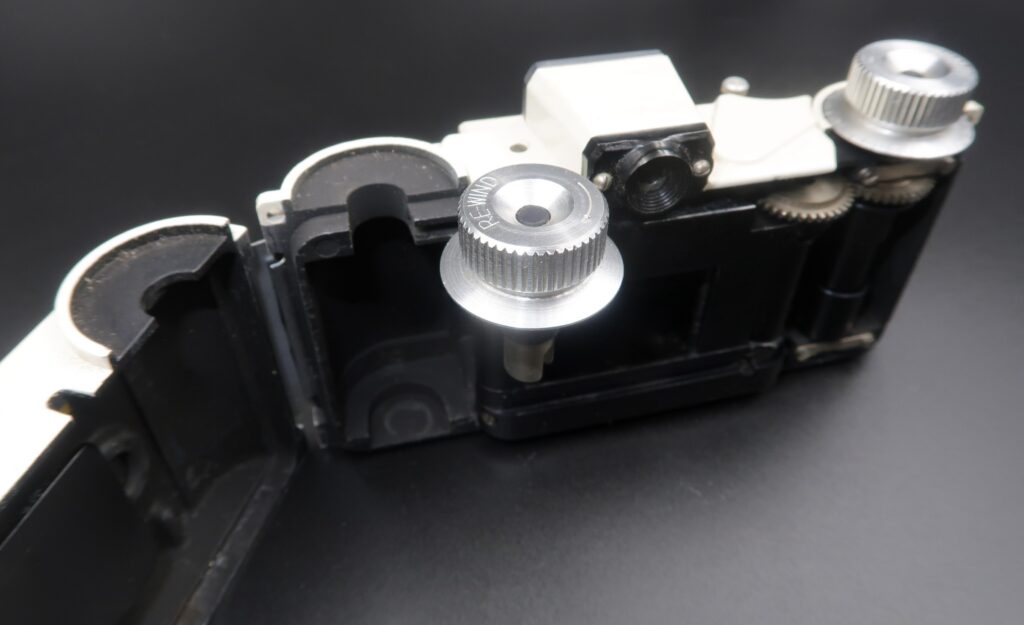
The only other settings needed to take photos are all around the Dallmeyer Anastigmat 35mm f3.5 lens on my camera. There are three different rings around the lens. On the outer or the largest ring, which has “Advocate” printed on the top, is the shutter speed dial, with speeds of 1/200, 1/150, 1/100, 1/50, 1/25, and “B,” which are set according to a red dot on the out portion of the ring. The next ring from the shutter speeds is the focus distance, which has the closest focus distance of 3 feet to Infinity. The inner ring has aperture settings, which go from f3.5 to f22. My first inclination was that the inner ring, which is actually on the lens itself, would have the focus ability, but it’s the aperture settings. I had to get used to that when shooting.
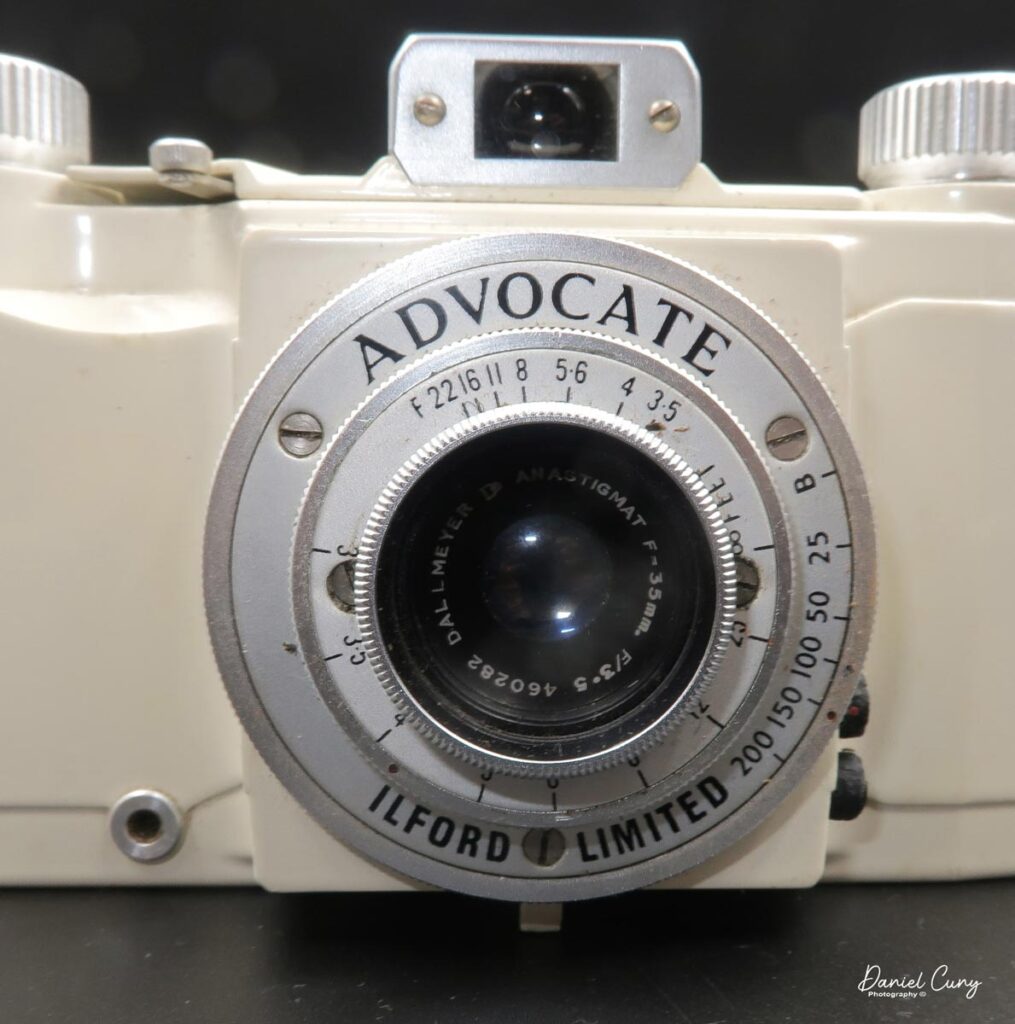
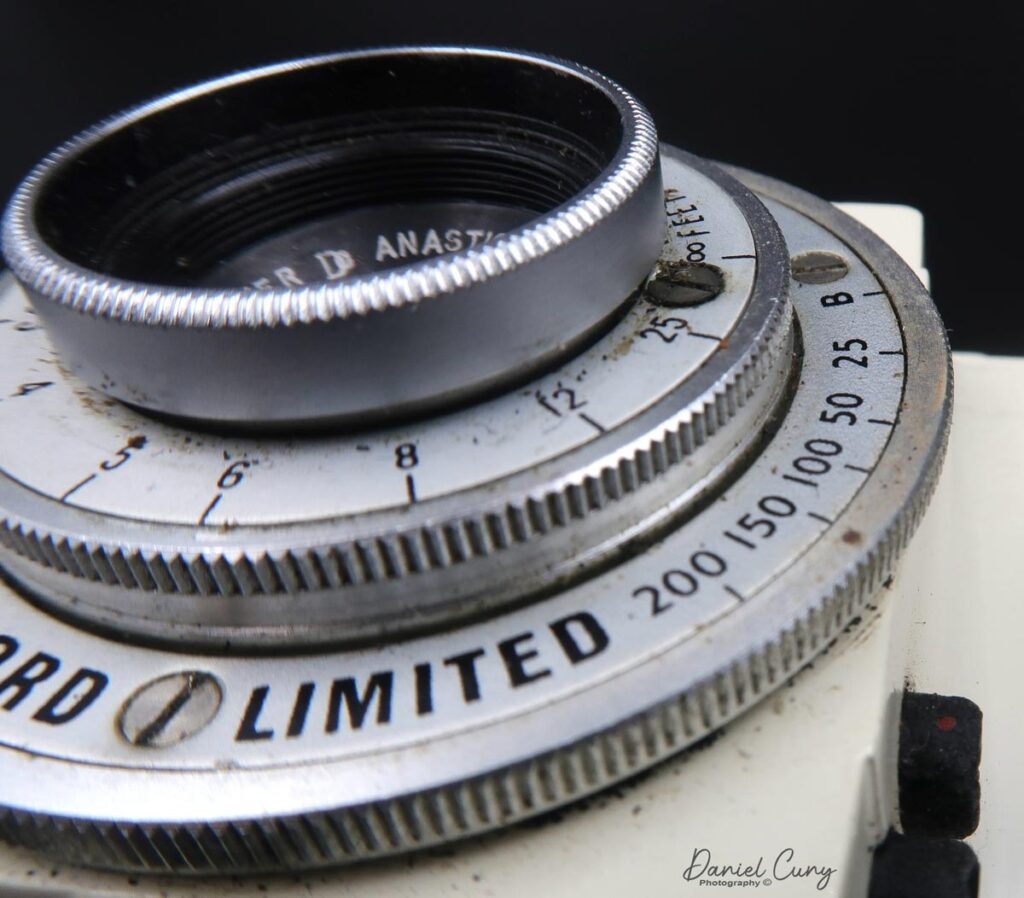
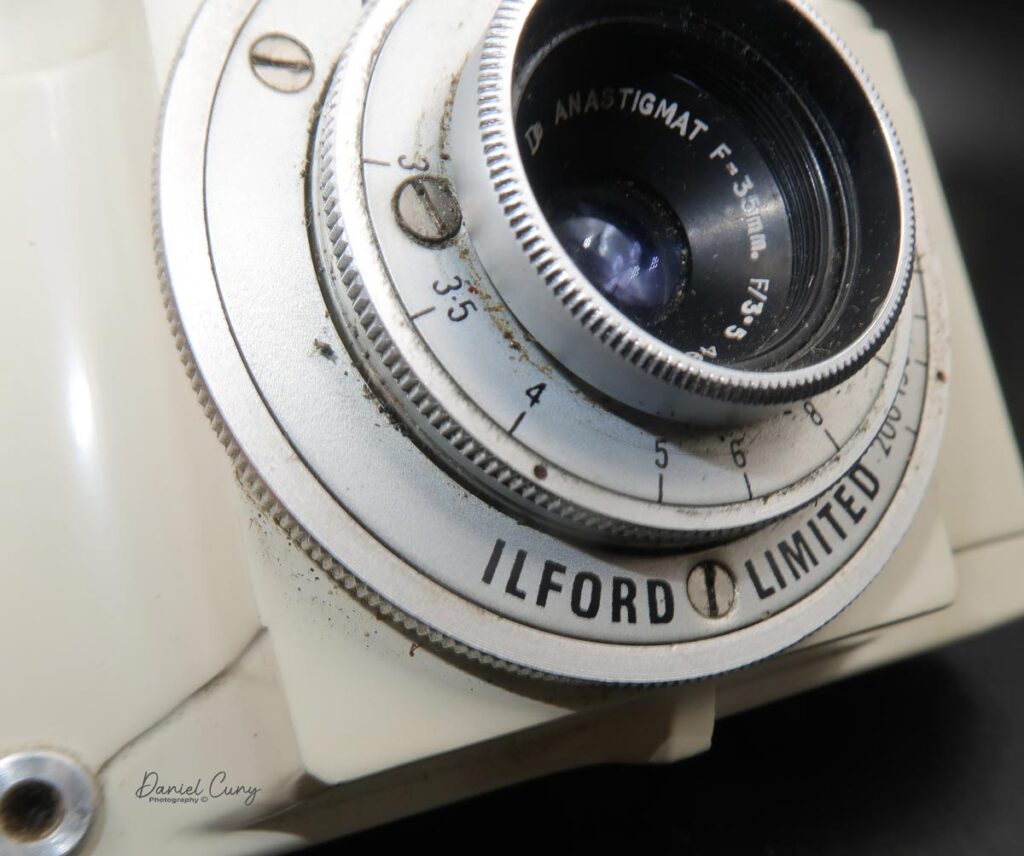
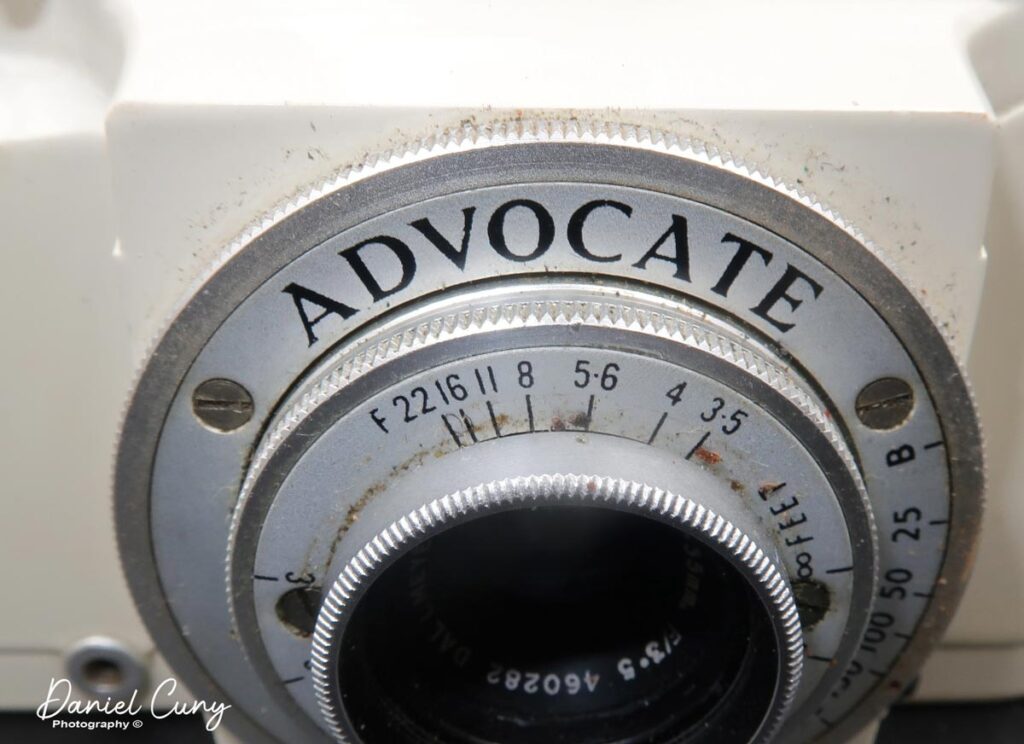
To take the photos, the shutter release is a pulling action as you pull the shutter release back towards the camera body as opposed to the most common pressing the shutter release down. It’s more similar to an Exakta or Topcon Super D. You get used to it when shooting. The feel of the shutter is firm, and you can hear the rotary shutter releasing and firing, so there is no missing if the camera took the photo. There is an auxiliary remote shutter socket on the front of the camera if you choose to put the camera on a tripod and shoot with a more prolonged exposure.
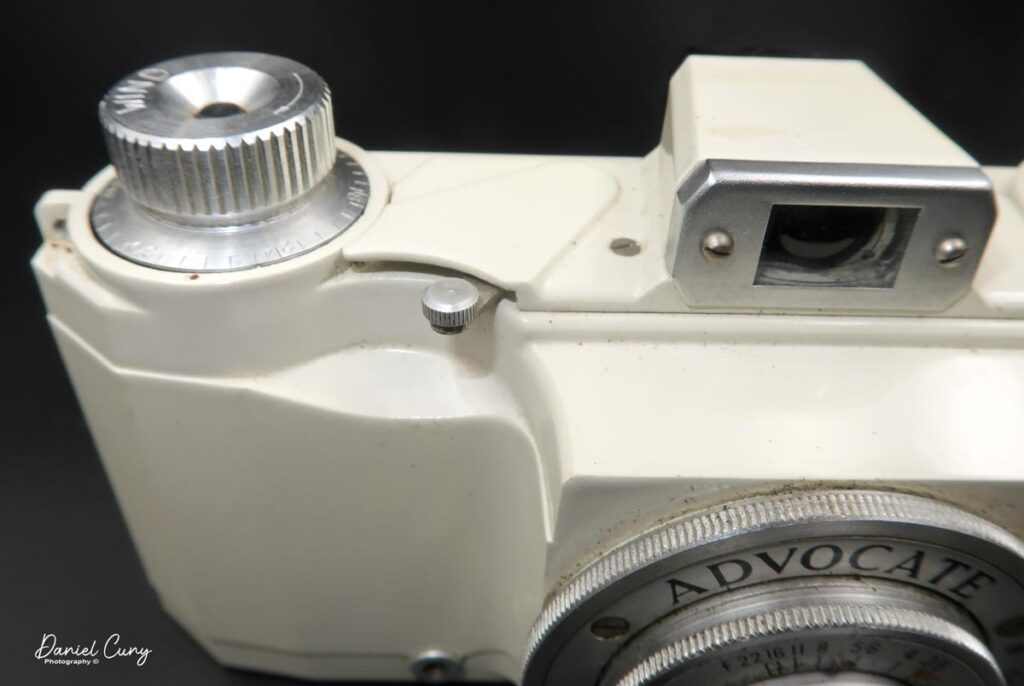
The viewfinder on the Ilford Advocate is bright and easy to compose images. My camera is the second version made, as the original Advocate cameras didn’t have the flash sync capability, which is located at about five O’clock on the lens and is a double-prong sync cable. The original model also has a chrome pressure plate to flatten the film.
Here’s the fun and one of the more exciting things I like about this camera. Once you’ve shot all the photos and want to rewind the film, there is no button to disengage the winding sprocket. All you need to do is press the winding knob down, which presses the gearing system down, and the winding gear is free moving, and the film can easily rewind into the canister. I really enjoyed the simplicity of this system.
My Results
I took the Ilford Advocate to a local farmers market and used an actual “shoot from the hip” method. I tried to be somewhat discrete, which may be difficult with a bright white camera around your neck, but here are some results.
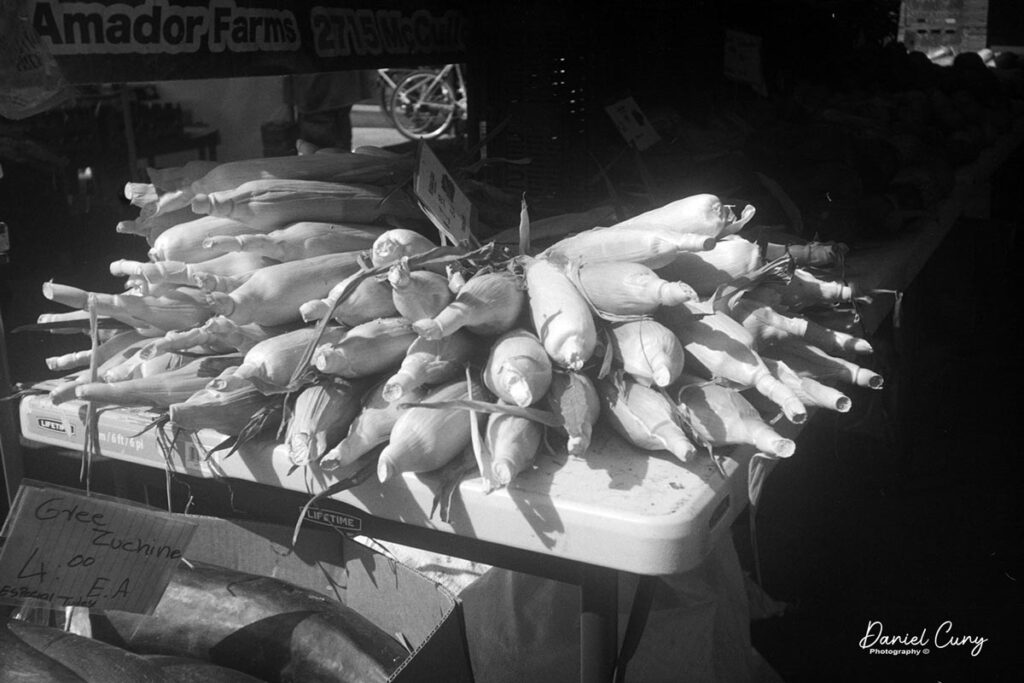
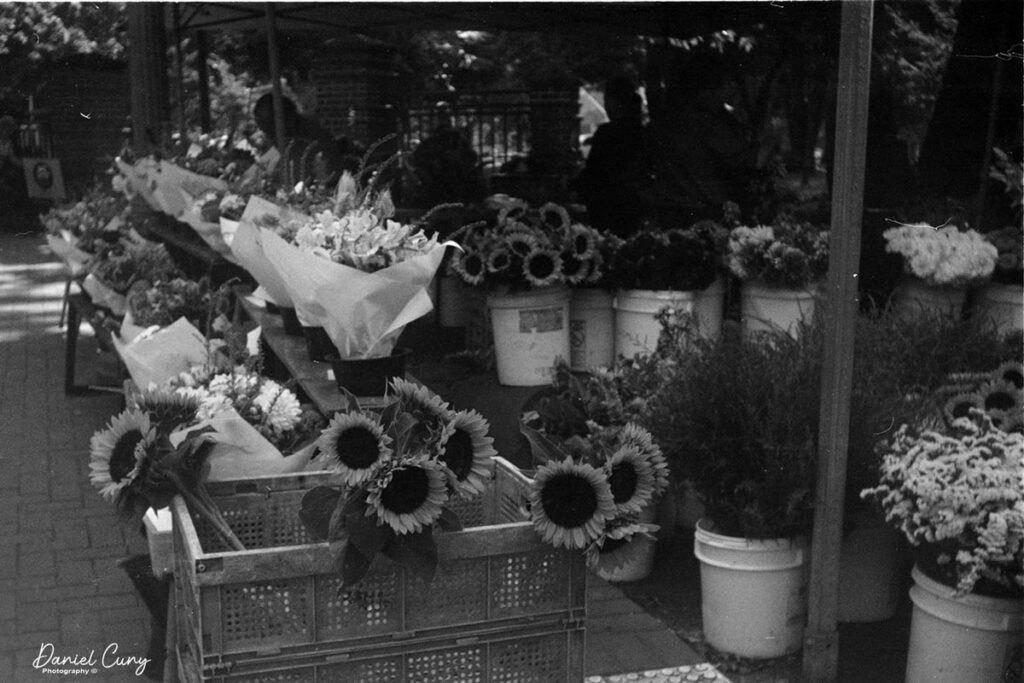
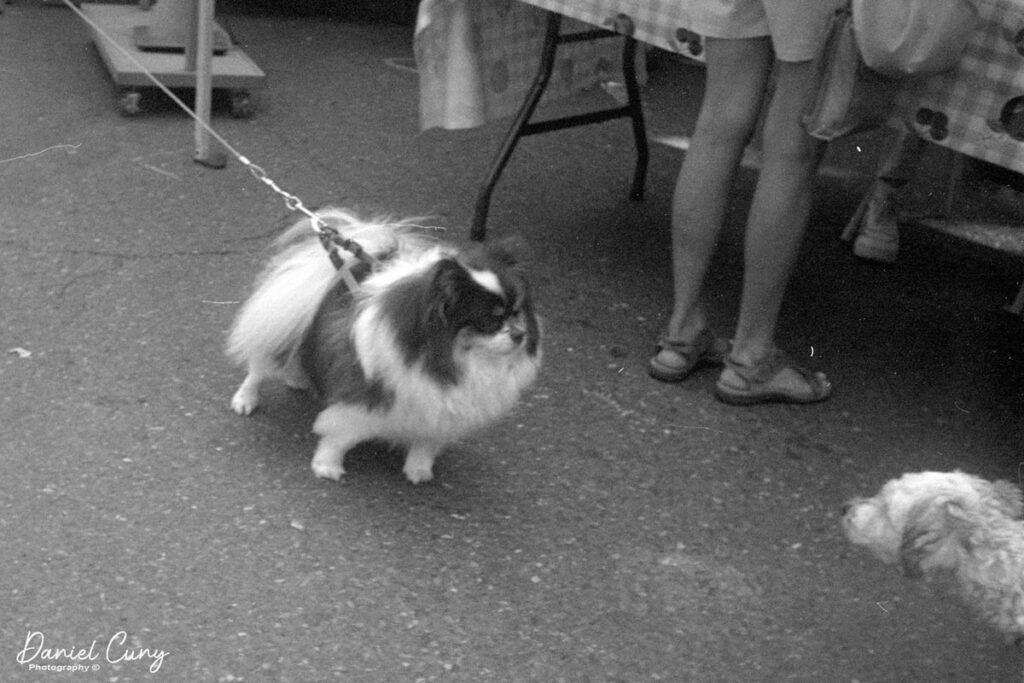
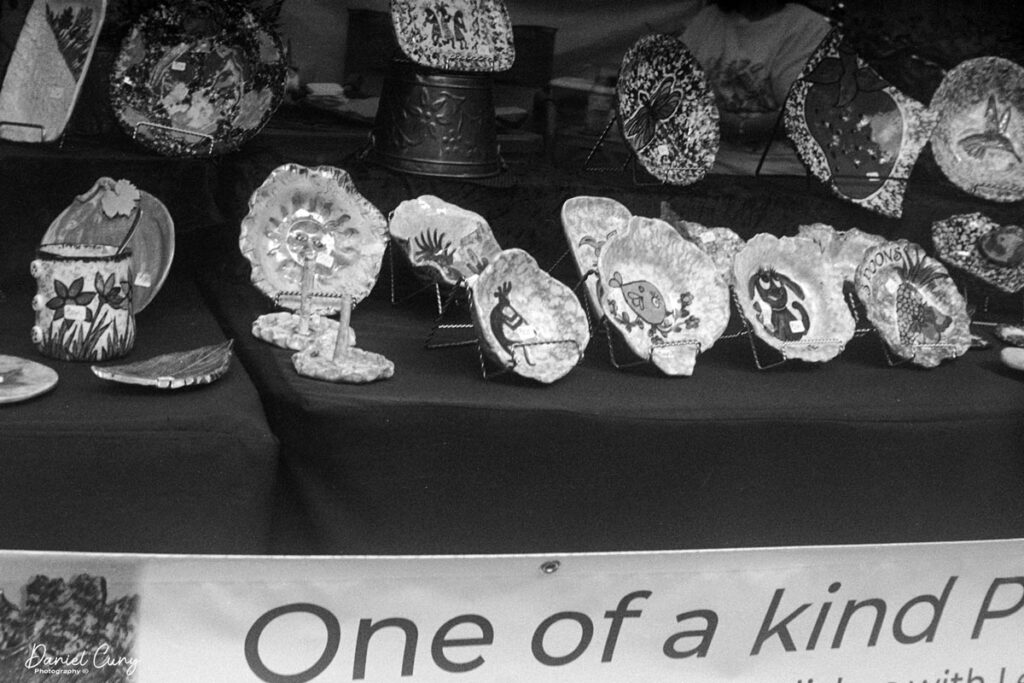
Conclusion
I really enjoyed shooting with the Ilford Advocate. The biggest obstacle I had was remembering which ring did which function. I kept going back to the inner ring, which was closest to the lens and was the focus, but it was an aperture, so I needed to keep this in mind during shooting. If I were to use it more often, it wouldn’t be that big of an issue; I also liked that the case was in excellent condition, which is only sometimes the case for older cameras.
Thank you for taking time from your schedule to look over this post.
Share this post:
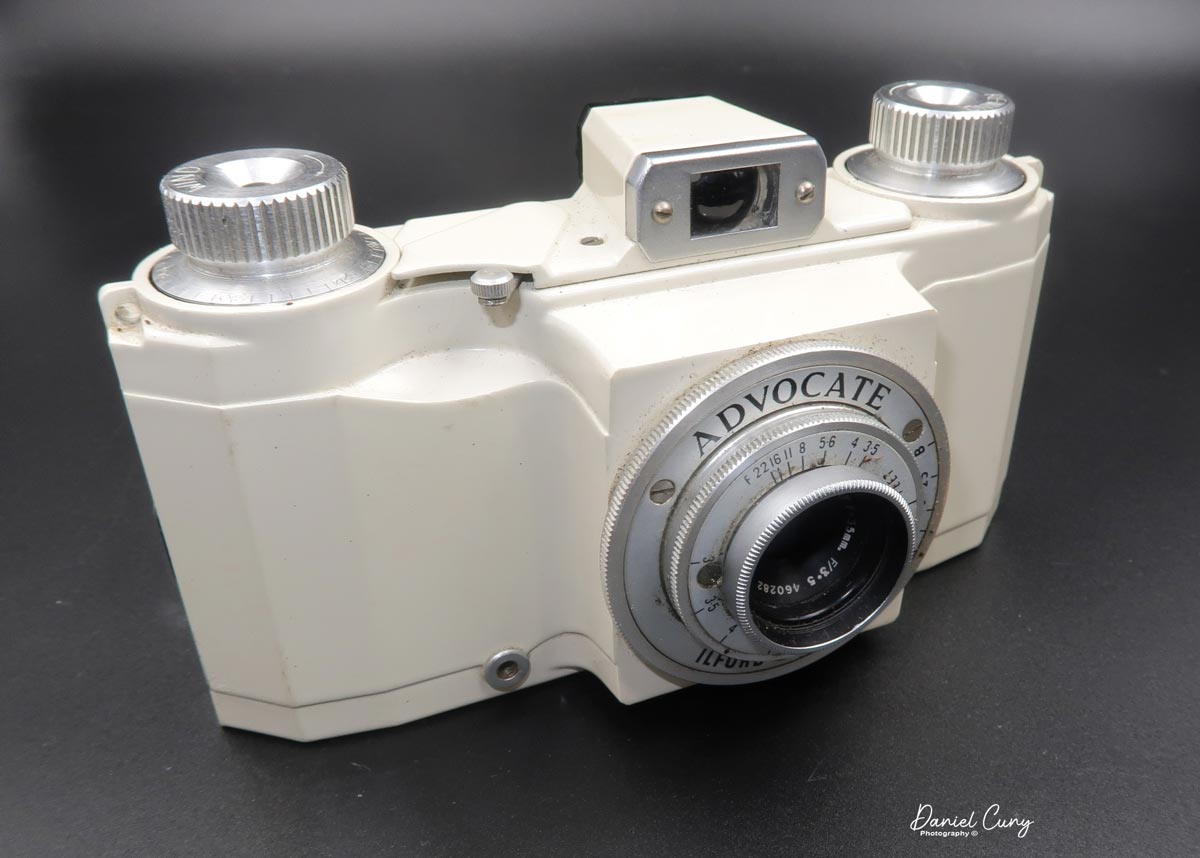
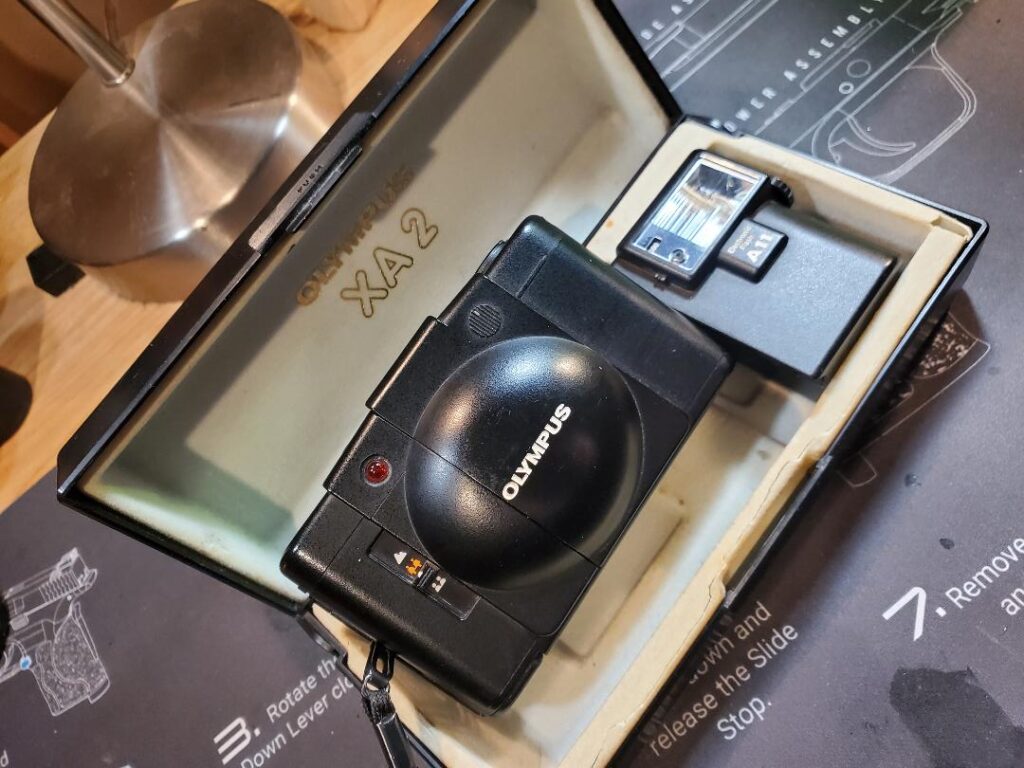
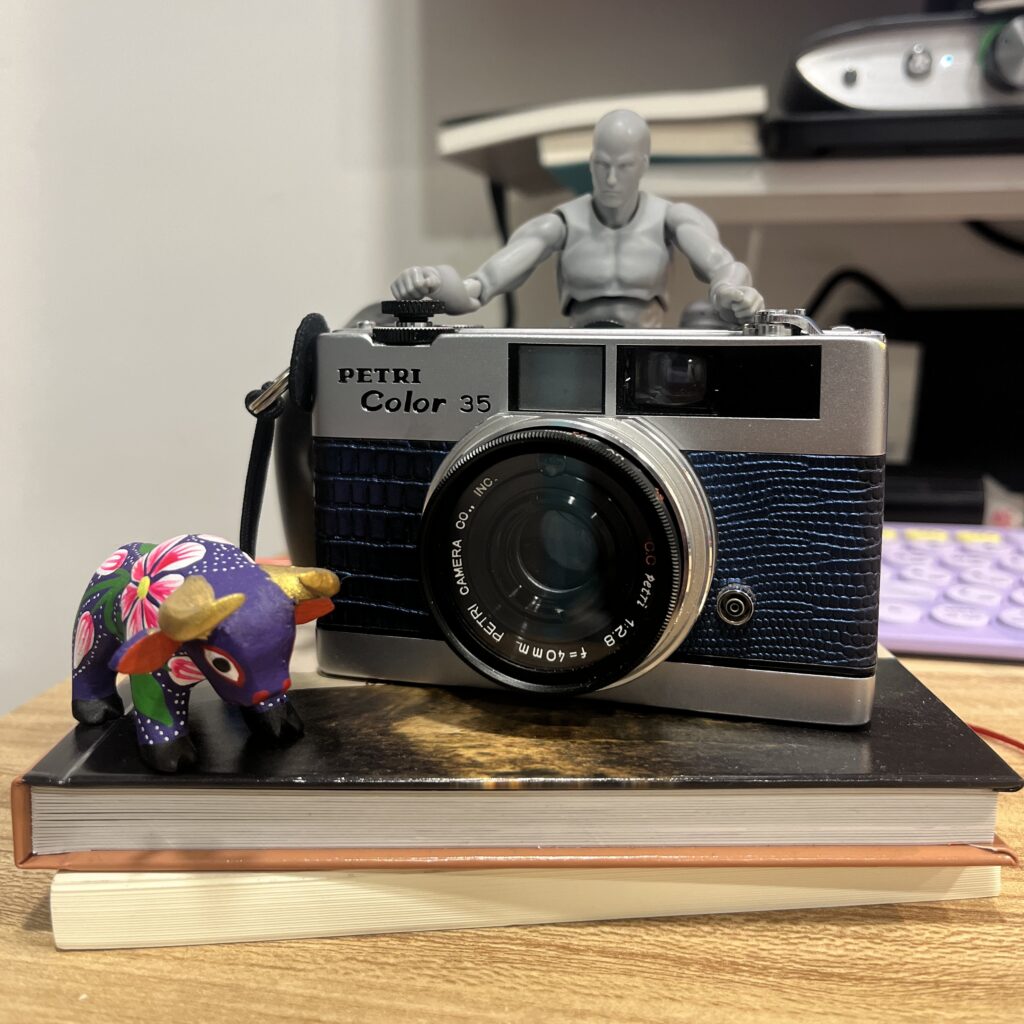
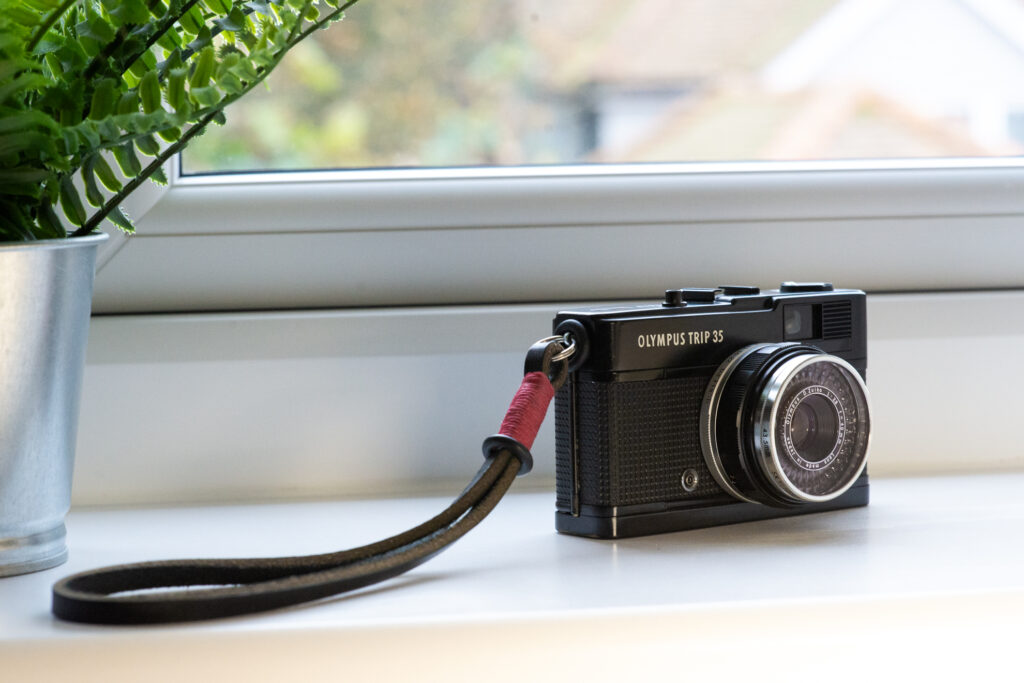
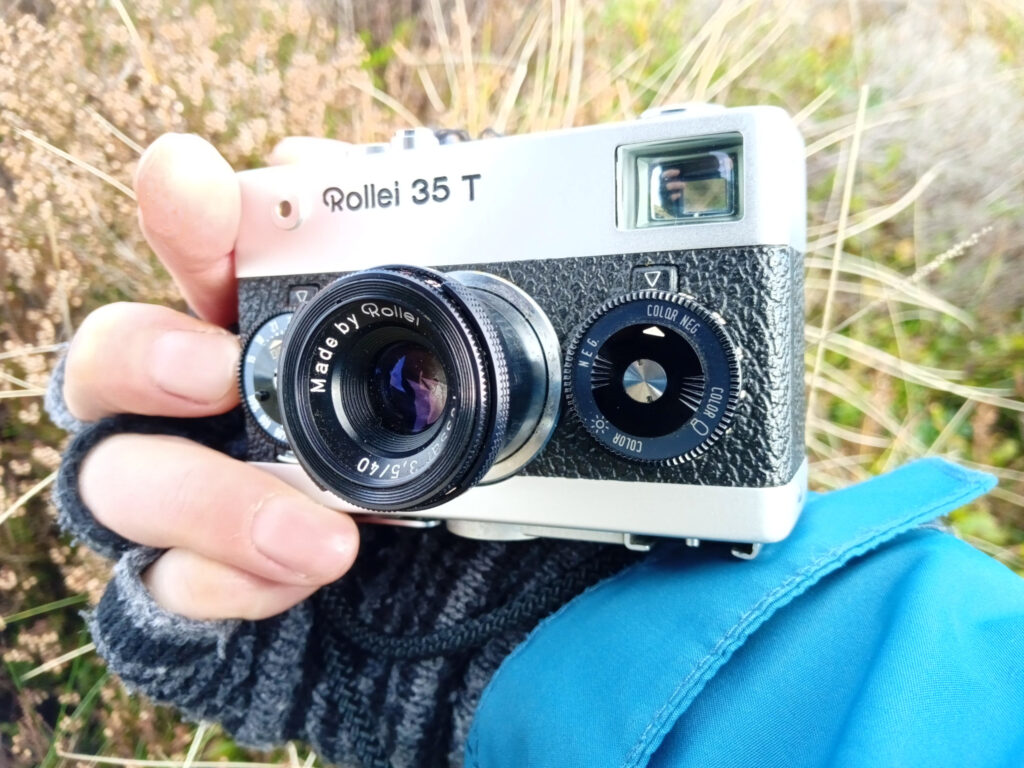




Comments
Bob Janes on Ilford Advocate Camera – A wonderful street camera
Comment posted: 30/10/2024
Comment posted: 30/10/2024
John Furlong on Ilford Advocate Camera – A wonderful street camera
Comment posted: 30/10/2024
A minor geographical point - the Kodak factory (a huge site, now sadly no more) was in Harrow - Harlow is in Essex.
Comment posted: 30/10/2024
Jeff T. on Ilford Advocate Camera – A wonderful street camera
Comment posted: 30/10/2024
Comment posted: 30/10/2024
Carl G on Ilford Advocate Camera – A wonderful street camera
Comment posted: 30/10/2024
However the name Peto Scott Electrical Instruments should also get a mention as they produced the "Witness" for Ilford. I've long lusted for one, a most beautiful camera!
Comment posted: 30/10/2024
Gary Smith on Ilford Advocate Camera – A wonderful street camera
Comment posted: 30/10/2024
Comment posted: 30/10/2024
Alan Simpson on Ilford Advocate Camera – A wonderful street camera
Comment posted: 31/10/2024
I've lived in Ilford for much of my life and for no other reason than that I've always favoured Ilford products over those from Kodak (or Agfa etc). I now own two Advocates, both of which need servicing: on one all the dials have seized solid, and on the other only the faster shutter speeds work - the shutter doesn't close on the slower speeds. That said, the second one is in near-mint condition without a single blemish. It does have a cold shoe on top of the viewfinder, which is so well made that I thought it was original, but as I've not seen another Advocate with such a shoe I assume it's a third-party addition.
Comment posted: 31/10/2024
Dave Powell on Ilford Advocate Camera – A wonderful street camera
Comment posted: 31/10/2024
Comment posted: 31/10/2024
Paul Quellin on Ilford Advocate Camera – A wonderful street camera
Comment posted: 01/11/2024
Comment posted: 01/11/2024